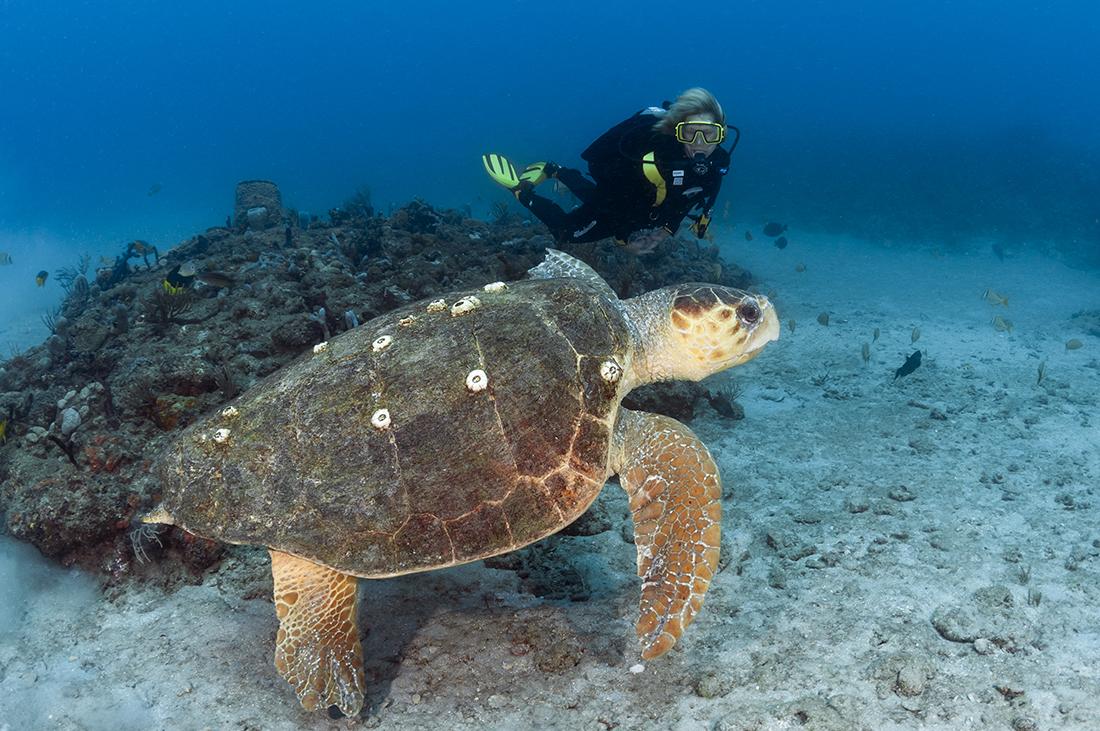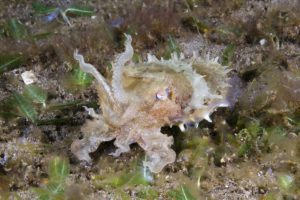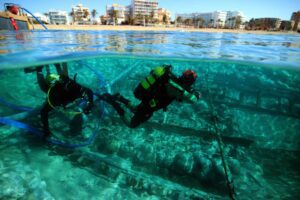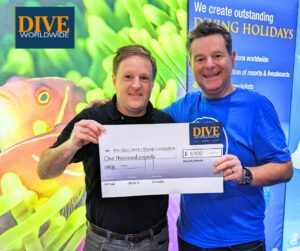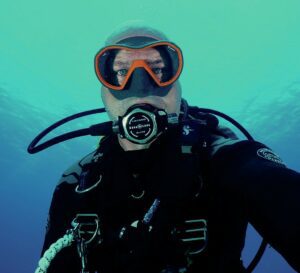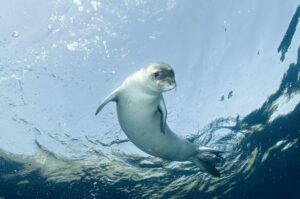The Palm Beach County coast is one of the few places in the world where divers can encounter all five species of sea turtles native to the Atlantic Ocean.
This makes Palm Beach County one of the world’s top destinations for seeing these ancient mariners.
Sea Turtles
Encounters with sea turtles are a highlight to any dive. Seeing one move underwater using their elongated, paddle-like fore flippers with graceful and powerful strokes is somewhat like watching a bird in flight.
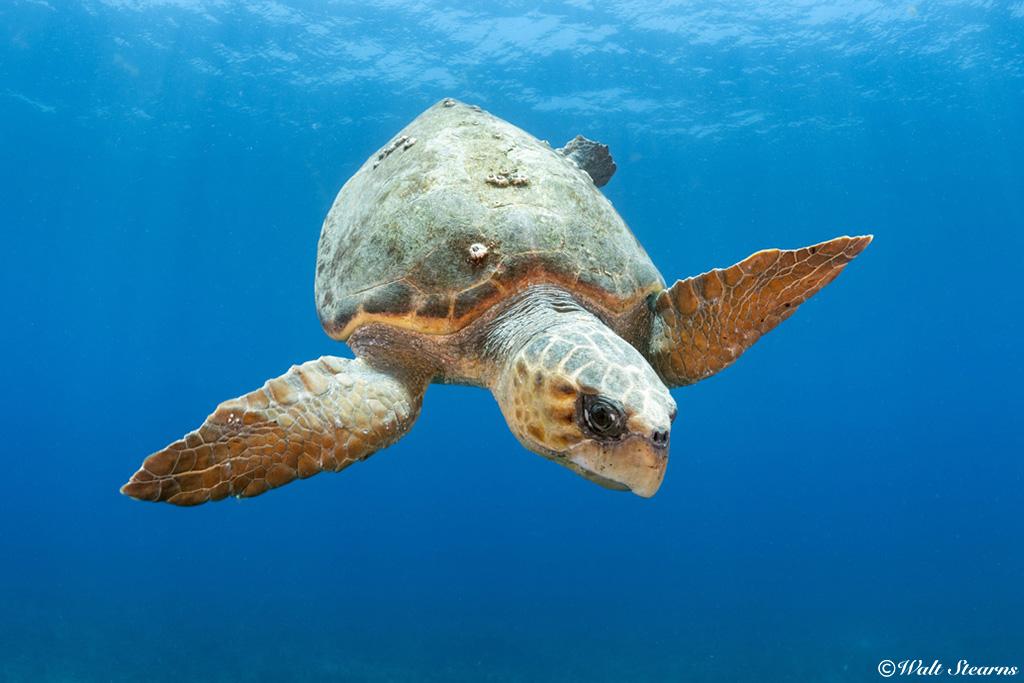
Sea turtles are special in that they are one of the ocean’s true ancient mariners, a fitting description on due to their ancestry. Sea turtles emerged from a marsh-dwelling ancestor some 150-million years ago during the Cretaceous Period to become fully adapted to an almost complete aquatic existence. And like all mariners who are born on land and go to sea, they must return now and again to their birthplace and haul their bodies out of the water to lay a clutch of eggs in the sand for the next generation to begin.
In all, there are seven species of sea turtle in the world’s oceans. Five are native to the Atlantic: green (Chelonia mydas), hawksbill (Eretmochelys imbricata), Kemp's Ridley (Lepidochelys kempii), loggerhead (Caretta caretta) and even the giant leatherback (Dermochelys coriacea).
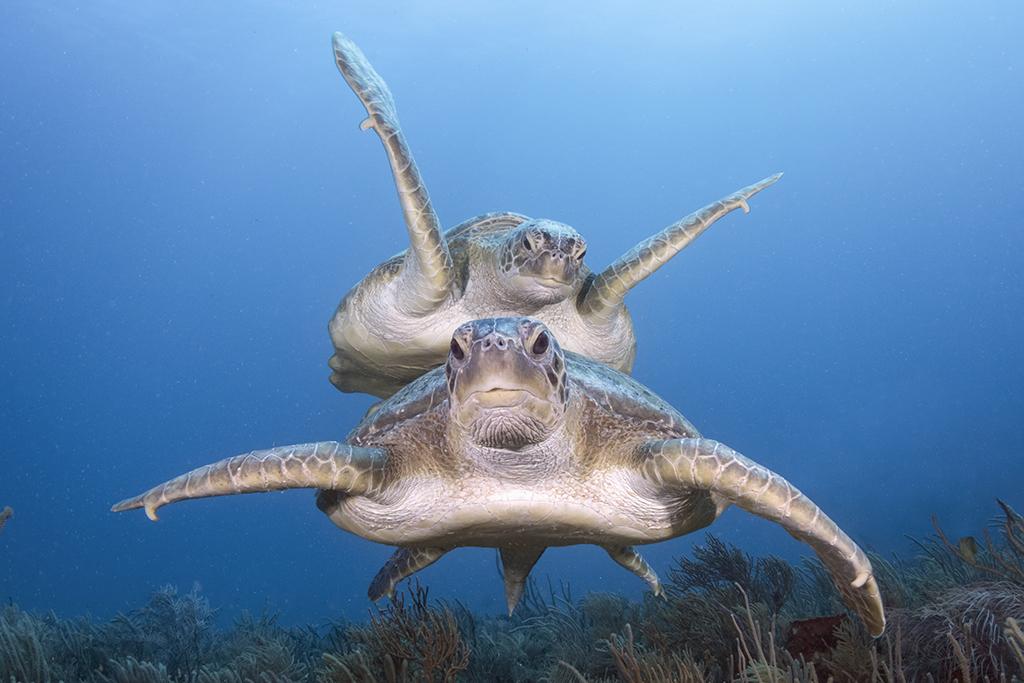
While almost all tropical regions on the planet will provide an opportunity to meet one to even two or three different species of sea turtle at one time, South Florida’s Palm Beach County coast is one of the few places in the world where divers can encounter all five sea turtle species native to the Atlantic. Having seen and photographed each and every species, I can confirm this small piece of Florida’s coast is one of the world’s top dive destinations for seeing these esteemed darlings of the reef.
Location, Location, Location
To address the question Why here? we should first look at the environmental dynamics of Florida’s Palm Beach coast. The underwater topography in this portion of Florida’s coastline is as close to sea turtle heaven as most places could get. The Gulf Stream, with its river of warm, tropical water, sweeps close to shore, bringing warmer water in up the surf line during even the coldest times of the year, creating a comfortable environment for both resident and transient species of these marine reptiles. In addition, ideal water temps on the reefs provide a great mix for finding food and shelter when sea turtles decide to sleep.
A characteristic of Palm Beach reefs is that they are primarily comprised of ancient coral beds and limestone bedrock that are riddled with deep undercuts; they create the kind of habitat that sea turtles seem to favor when heavy wave action generates strong surge. On any given dive, it’s quite common to run into two or three Hawksbills or to find a large Loggerhead or two roaming the reefs or snoozing beneath a ledge or in the middle of a patch of soft corals. Anything less would be considered a slow day.
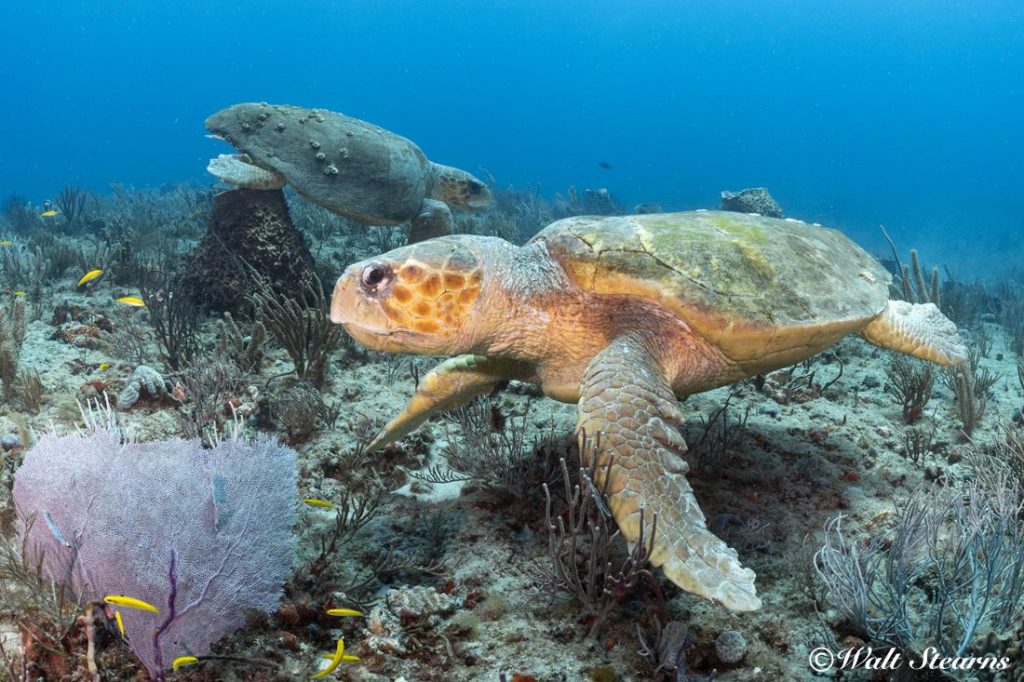
Any time of year is good for seeing turtles off the Palm Beach Coast, although the best opportunities occur in the months following the first day of spring. This is because the Palm Beach Florida area happens to provide miles upon miles of sandy beaches suitable for adult turtles to come ashore during the late spring and summer months to lay a clutch of eggs in the sand. Between these two attributes, the Palm Beach Coast is a major breeding and nesting ground for three of the Atlantic Ocean’s five species–green, loggerhead, and leatherback. And between the months of May and July when nesting season reaches its peak, Florida’s Palm Beach coast plays host to more sea turtles per acre than anywhere in the Southeastern U.S. or Caribbean.
During my own forays on the reefs, I run the risk of becoming a bit jaded as to not only how many turtles I might see during these season peaks, but also the mix of species I might find. Hawksbills and loggerheads are pretty much a given as they’re the dominant species here year-round, but when the dive also includes a green or two, with a Kemp’s Ridley or giant leatherback, where do you go from there?
Who are Atlantic’s Fabulous 5 Species of Sea Turtles
To introduce the Atlantic’s Fabulous 5 Species of Sea Turtles, I’ll begin with our two most endearing residents of the reef, loggerhead and hawksbill.
Loggerhead (Caretta caretta)
In Florida’s Palm Beaches, the opportunity to meet a loggerhead sea turtle face-to-face is typically not a matter of if, but when, as they are the first large creature divers are likely to encounter on the reefs. They are easily recognized by a thick, rough-textured shell and large blunt head, which looks like the end of a log. Loggerheads (Caretta caretta) are widespread species found in both the Atlantic and Pacific Oceans. While most fully mature turtles average around 4 feet in length 9 (from end to end of their shell), it’s not unusual to come across adult females measuring 5 feet long and weighing in at close to 500 lbs.
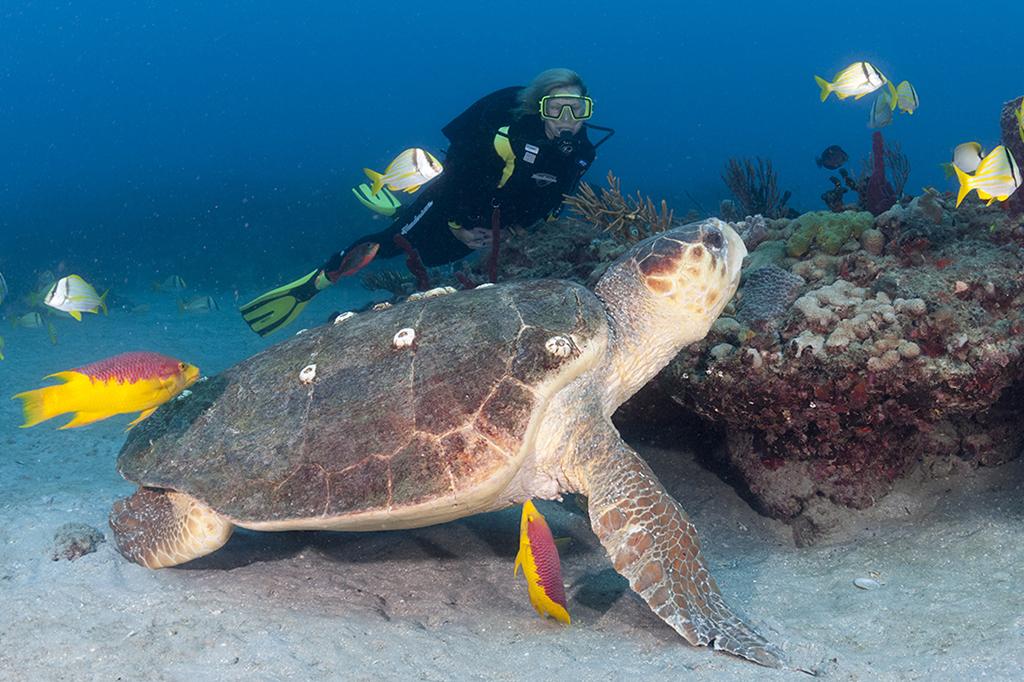
In addition to their large size, loggerheads are also omnivorous, dining on just about anything they can get like jellyfish and crustaceans to even dead fish when they find it. This one dietary habit has made them highly susceptible to long lines set by commercial fishermen. During the height of loggerhead nesting season (June/July) resident turtles are joined by transient individuals, causing the population to more than triple in number.
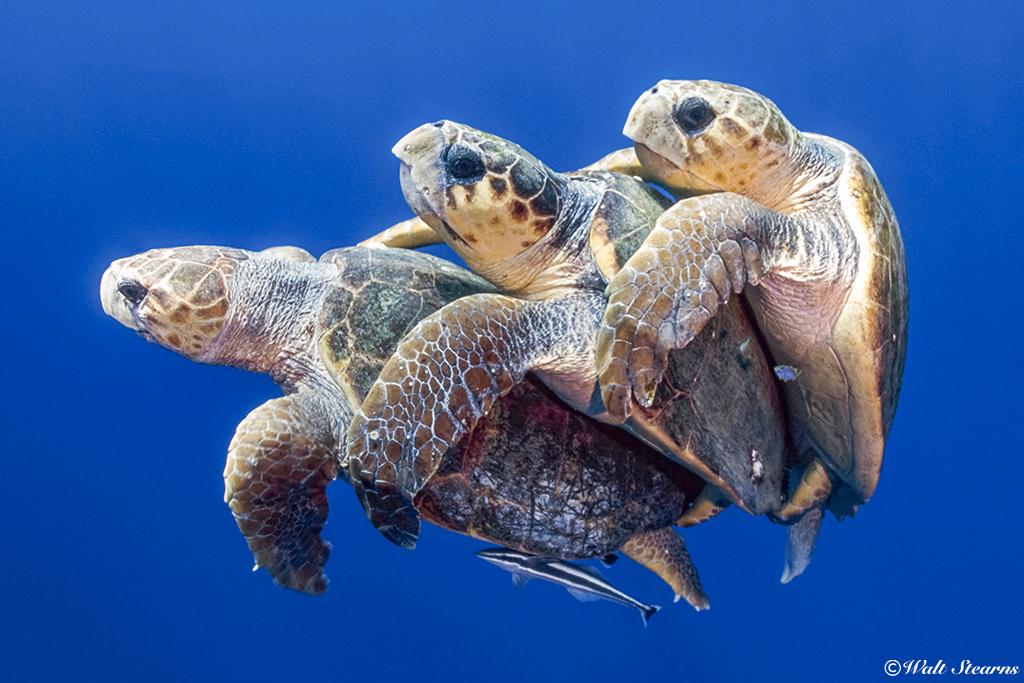
Offshore on the reef tracks in the 60-foot range between Jupiter and Boynton Beach, divers have described being outnumbered by loggerhead turtles, running across as many as 15 to 30-plus large turtles bedded down for a nap on the reef during the course of single drift dive. When turtles nest, it is typically at night when they emerge from the sea and crawl straight up the beach to a suitable spot to dig a hole and lay their clutch of eggs. On average, sea turtles lay between 90 and 110 eggs in a single clutch.
During the span of one summer nesting season it’s quite common for individual turtles to make as many as 6 to 8 visits ashore. To haul such a large body that was not designed to function on land, up a sandy slope to perform such a task, including covering the eggs up before they crawl back into the ocean, a process encompassing 1 and 1.5 hours to complete, takes a great deal of physical effort. As such, the turtle is so highly fatigued the only thing they have on their mind is finding someplace safe to sleep it off.
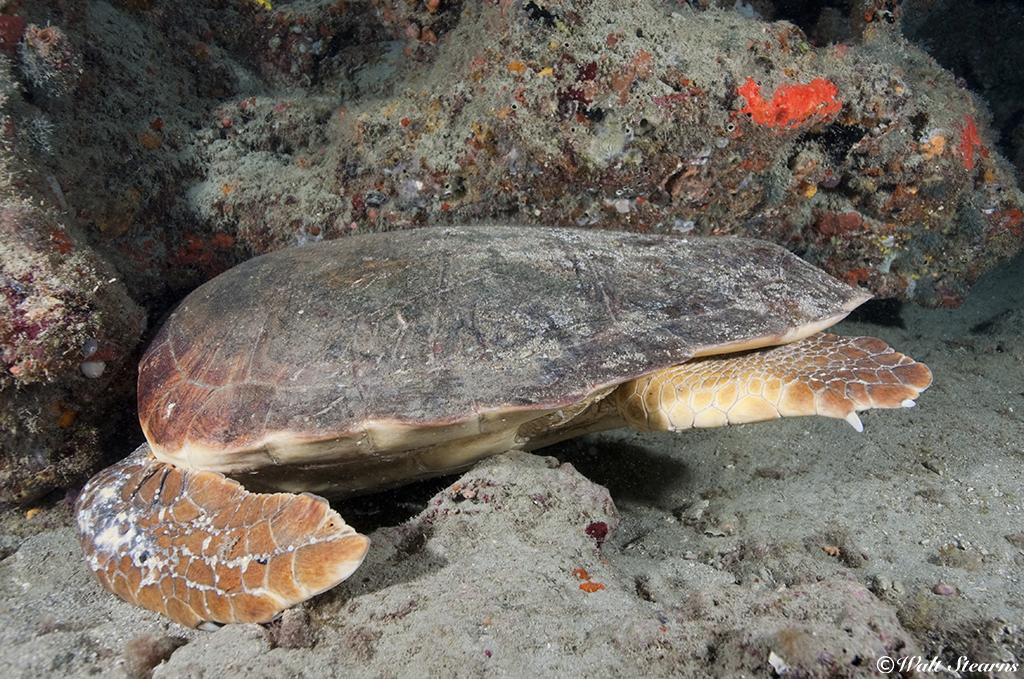
The most telling evidence that one of these grand ladies had just made it back to the reef is their comical appearance of having settled in with only their head stuck up under a ledge too small for the rest of their body to fit. A scene that that often brings to mind someone attempting to park a large truck in small backyard tool shed.
Atlantic Hawksbill (Eretmochelys imbricata)
Next to loggerheads, the Atlantic hawksbill (Eretmochelys imbricata) is the second most abundant species of sea turtle off Palm Beach County’s coast. Smaller and more agile, hawksbills are easily identified by their protruding upper jaw, which resembles a hawk’s beak and the distinguishable ornate coloration in their shell.
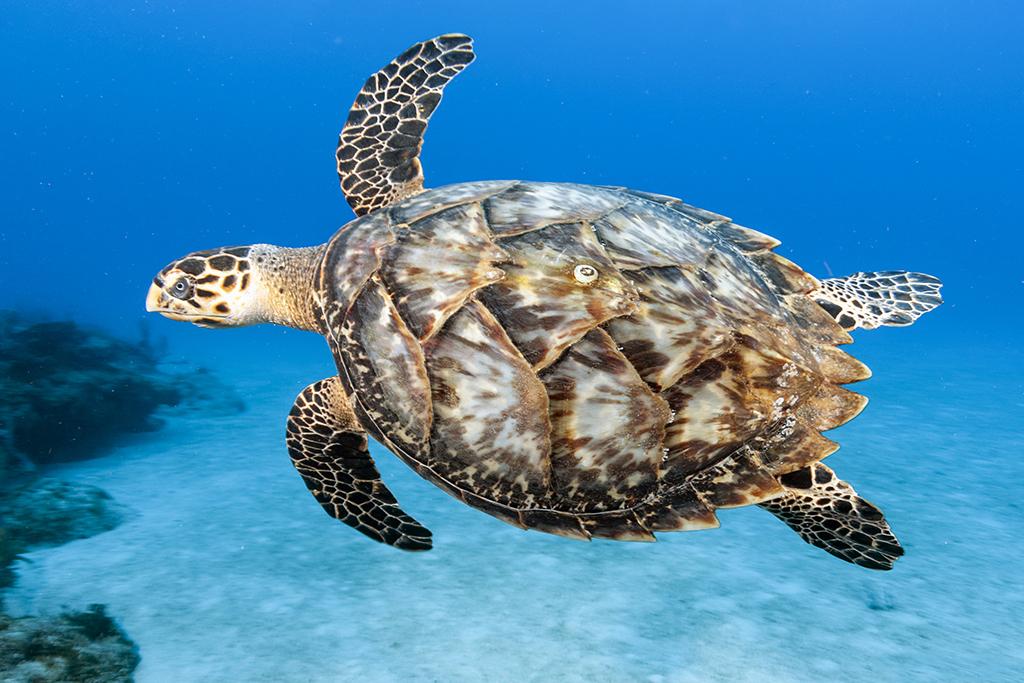
An interesting factoid about hawkbills is that they do not nest on beaches along Florida’s southeast coast. Instead, their primary nesting grounds take place in the Caribbean. Nesting is not seasonal and takes place year-round. Most of the hawksbill turtles seen in Palm Beach County are juveniles that are two to three feet in length and not yet sexually mature. A fully mature adult will measure 45 inches long, weighing around 190 pounds. If you run into a larger hawksbill, it’s likely a transient just passing through.
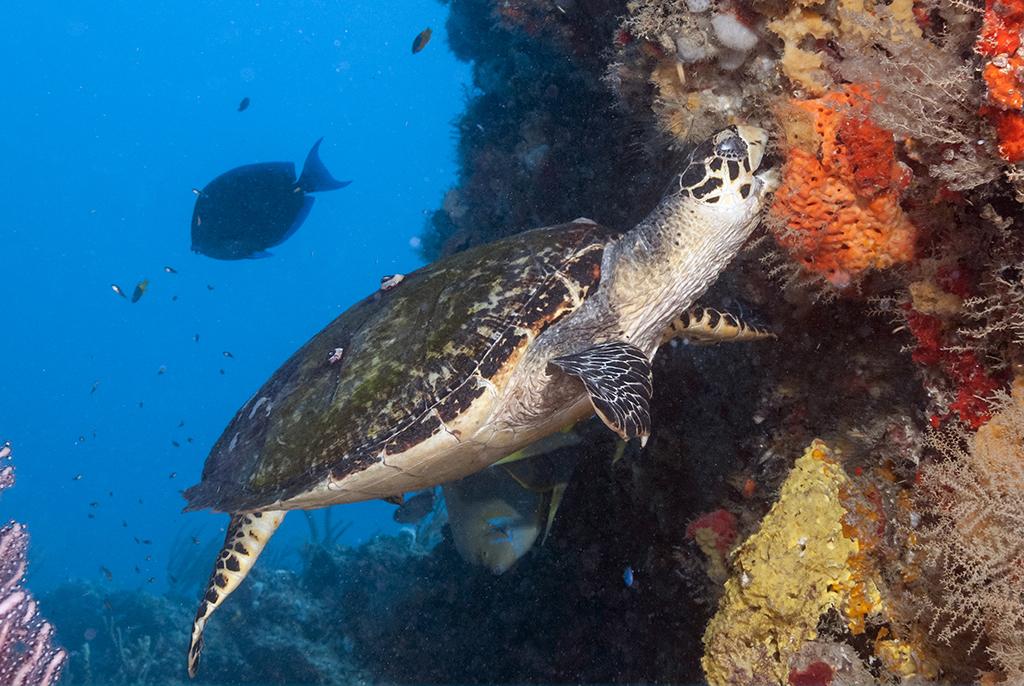
While most sea turtles are omnivorous (only the leatherback exclusively feed on sea jellies), hawksbills have a particular taste for sponges, which constitutes 70–95% of the its diet. A good indication that one of these spongivores have been at work is when you find a sponge with golf ball size divots carved out of its side.
Aside from sponges, hawksbills will sometimes dine on sea jellies including the highly venomous Portuguese man o' war (Physalia physalis). When they do this the hawksbill will close its unprotected eyes to prevent the man o' war's stinging cells from penetrating the its armored head.
Atlantic Green (Chelonia mydas)
Compared to the abundance of loggerheads and hawksbills, green turtles (Chelonia mydas) come in at third place off the Florida coast. Most of the greens spotted by divers are typically juveniles that are less than two feet in length but come early June to August a good number of adults averaging between 240 and 420 pounds come to the Palm Beaches between to lay their eggs up on the beach.
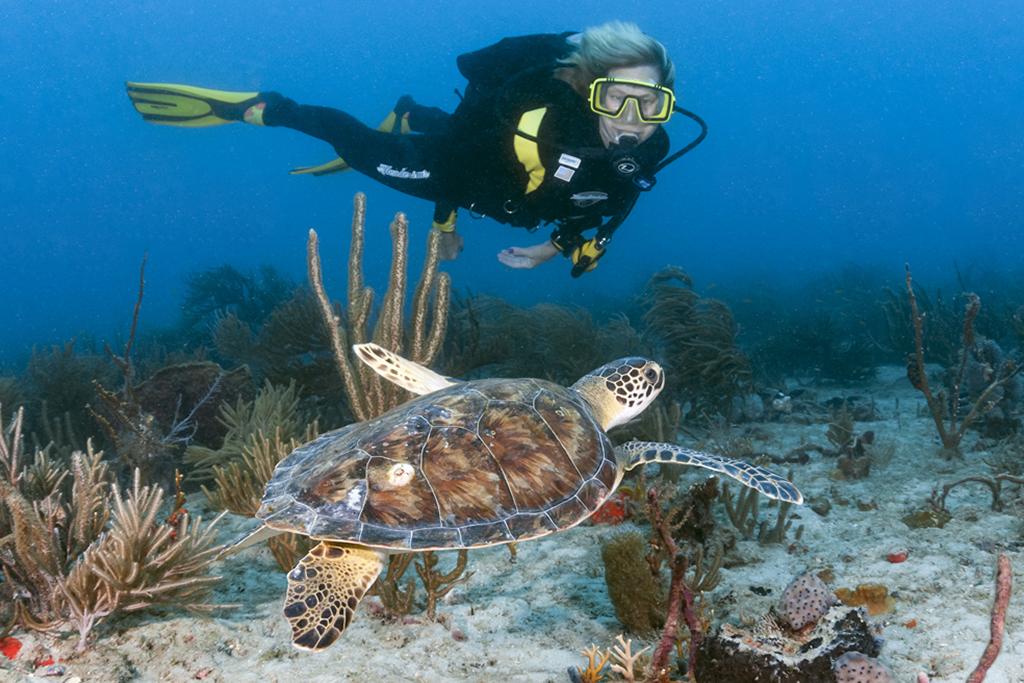
Although similar in size to loggerheads, most adult green turtles seen on the reefs in Palm Beach are smaller at a foot or two long. The physical distinction between loggerheads and green turtles is clear; the carapace (shell) of a green is smooth, generally olive-brown in color, and marked with dark brown streaks and/or spots. And most of all, the head is smooth, and bullet shaped. The name green sea turtle was actually derived from the greenish color of its body fat, not its skin or shell.
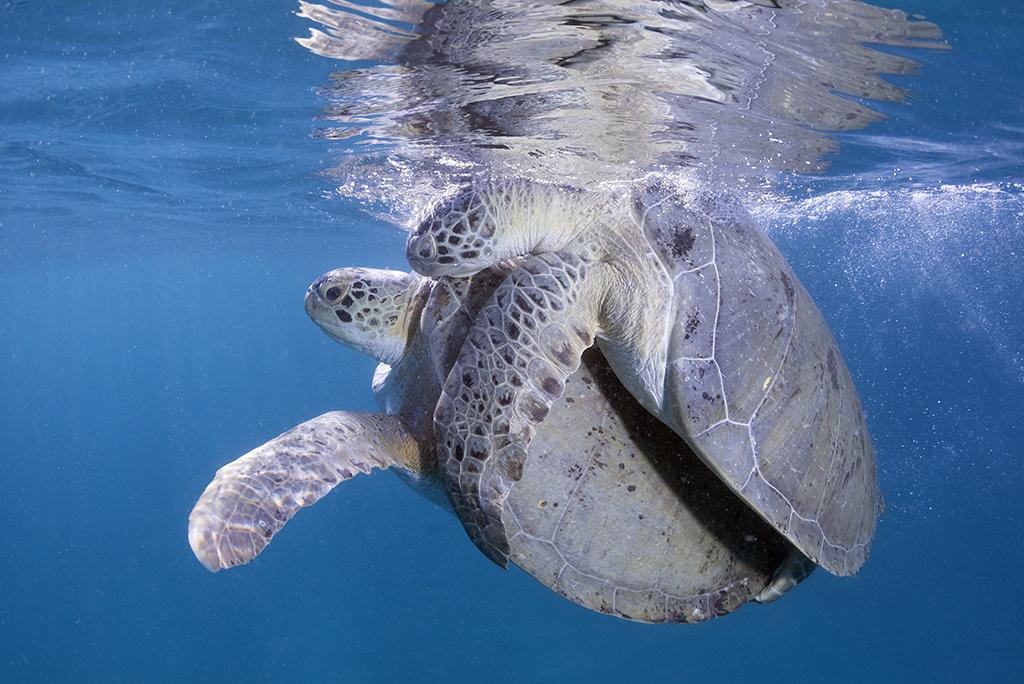
The one thing to keep in mind when looking for a green sea turtle is to watch the water column overhead as much as the reef; greens typically don’t rest as often as loggerheads, even after a full night’s journey ashore.
Leatherback (Dermochelys coriacea)
As large sea turtles go, the leatherback (Dermochelys coriacea) is a colossus. At full maturity, a leatherback will measure up to 6 feet in length and weigh as much as 1,100 pounds. The largest leatherback recorded was 6.5 feet long and tipped the scales at 2,019 pounds, making it a colossus in the world of living sea turtles. In the water or on the beach, there is no mistaking this creature with it is predominantly black body with white markings, and teardrop-shaped leathery carapace instead of a hard shell.
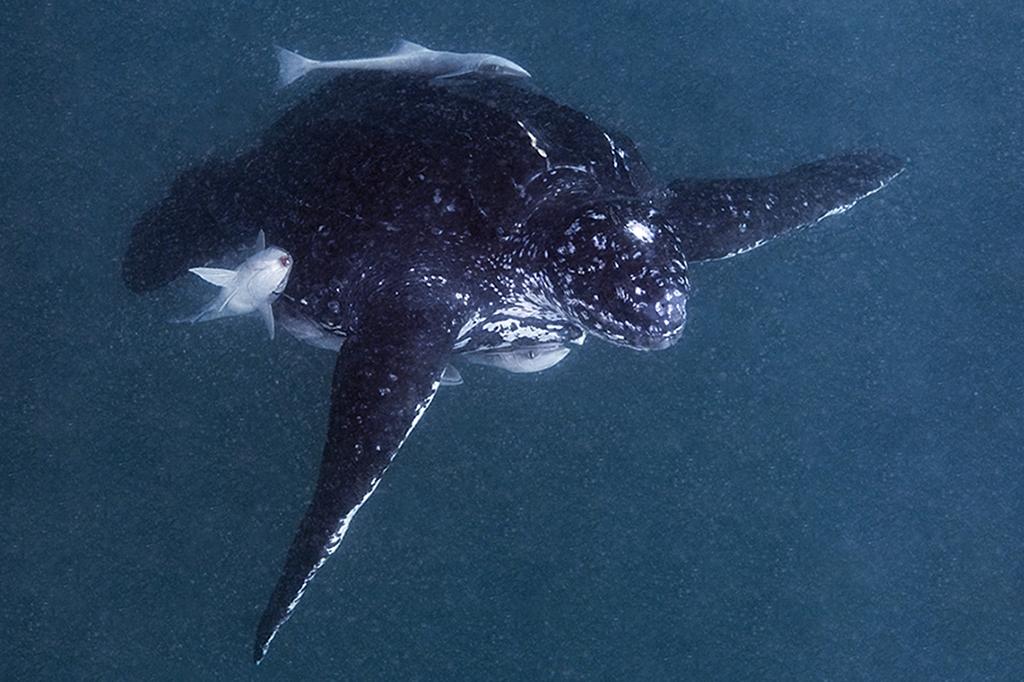
Adding to the size factor, perhaps leatherbacks are the most intriguing of all sea turtles as they are a throwback to the height of their evolutionary development some 75 to 100 million years ago, when sea turtles had obtained the size of giants. The largest of these was a species called Archelon (Greek meaning ruler turtle), which grew to 13.5 feet in length, with a flipper span of 16 feet from tip to tip.
The largest Archelon fossil was unearthed in the 1970s in South Dakota’s Pierre Shale region, which was a shallow sea during the late Cretaceous period 65-75 million years ago. Like their ancestral forerunner, leatherback sea turtles differ from other present-day sea turtles in that they do not have a solid shell, they have a skeletal framework covered by a leathery carapace.
The most significant Atlantic nesting sites are in Suriname, French Guiana and Trinidad and Tobago in the Caribbean, Gabon in Central Africa and of course Palm Beach County beaches accounting for just shy of 30% of total leatherback nests laid in Florida.
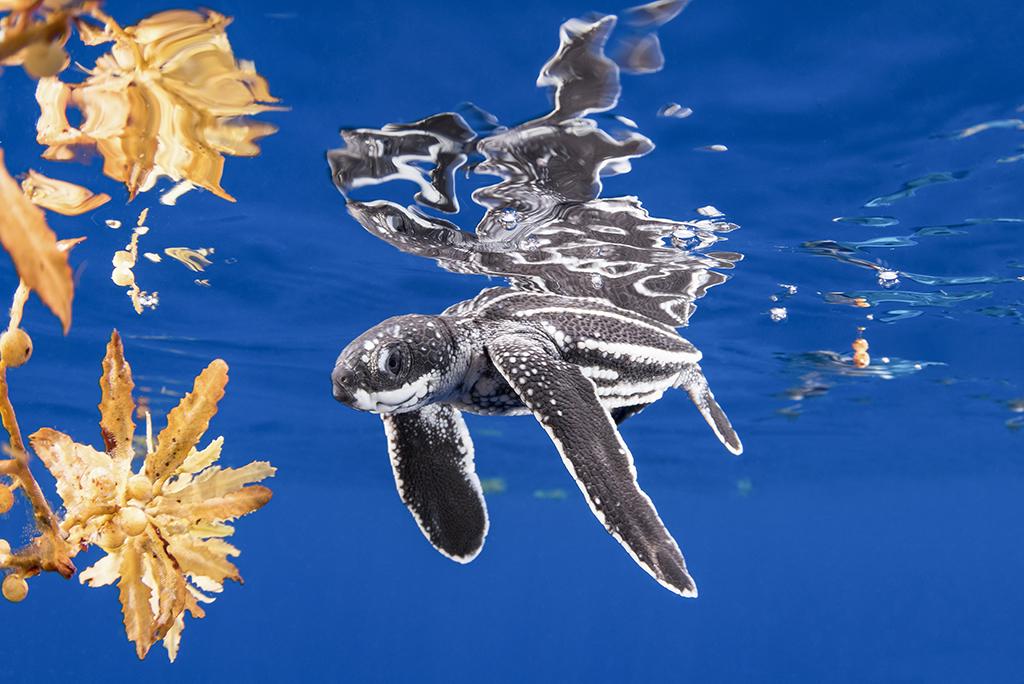
Since 2001, the Loggerhead Marinelife Center in Juno Beach have been highly involved in monitoring the rate of occurrence of nesting behaviors of the leatherback. The Marinelife Center team have accumulated a database of more than 360+ individuals. The epicenter of this activity begins as early as March running primarily during April and May and taking place between the Jupiter Inlet and the Lake Worth Inlet.
Kemp's Ridley (Lepidochelys kempii)
When comes to turtle species seen off the Palm Beach County coast the Kemp's Ridley (Lepidochelys kempii) is the odd man out. The Kemp’s physical appearance often raises the question Is that a medium size green or a medium size loggerhead?
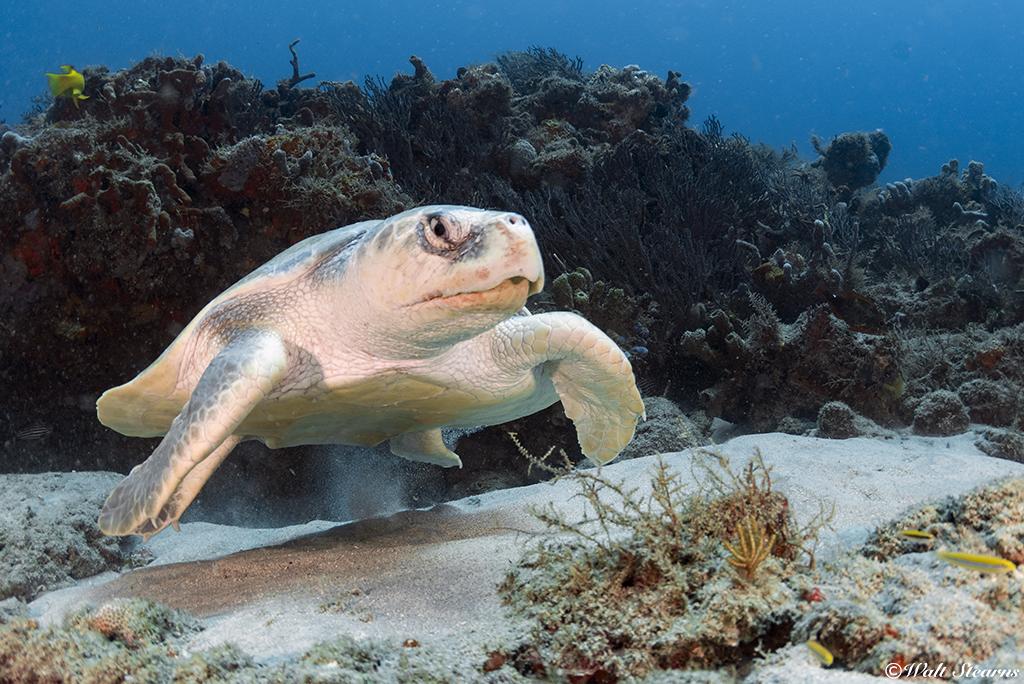
While the head carries some resemblance to a loggerhead their shell is smooth like a green turtle’s but with a coloration that is lighter tan and grey. Another characteristic to the Kemp’s carapace (shell) is a semi-flat profile compared to other species, as well as a significantly more rounded shape when viewed from above.
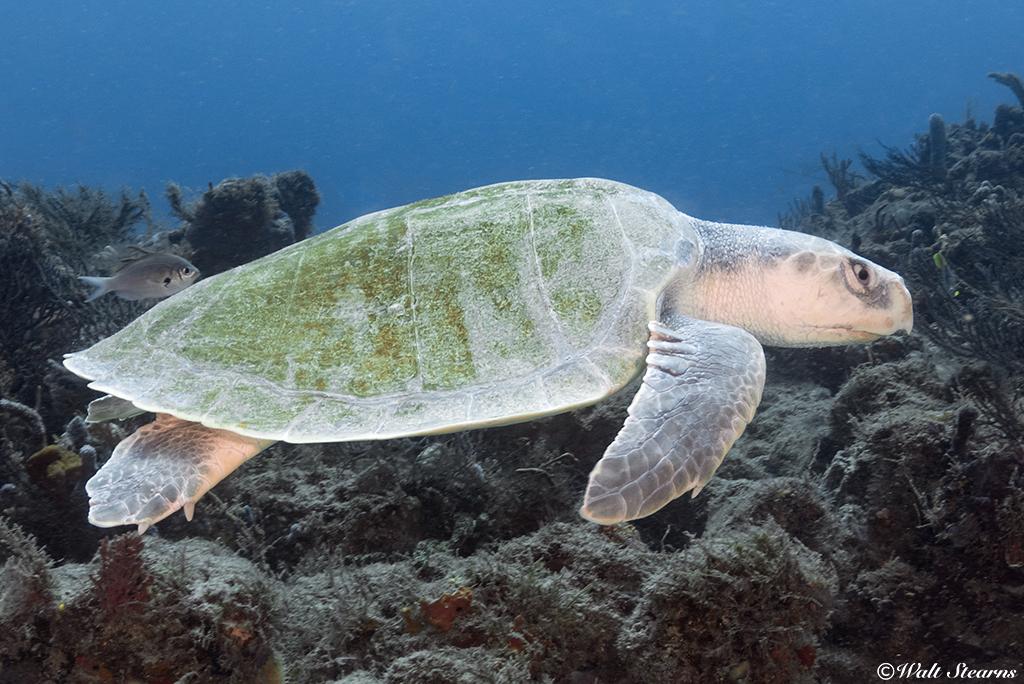
Kemp’s are the smallest species of sea turtle reaching maturity at 2 to 3 feet long and averaging no more than 100 lbs.
Although found more predominantly in the Gulf of Mexico, an extremely small population of Ridley’s reside off Florida’s eastern coast between Jacksonville and the northernmost end of the Palm Beaches. Count yourself lucky should you see a Kemp’s Ridley sea turtle.
Sea Turtle Photo Etiquette
There is a lot to be said about how we behave in the water, especially around marine animals that can easily feel threatened. Sea turtles may be large, but they are also shy, reclusive and easily intimidated. That said, your best photo opportunities will come by being both patient and courteous–we know how many of us like to capture selfies.
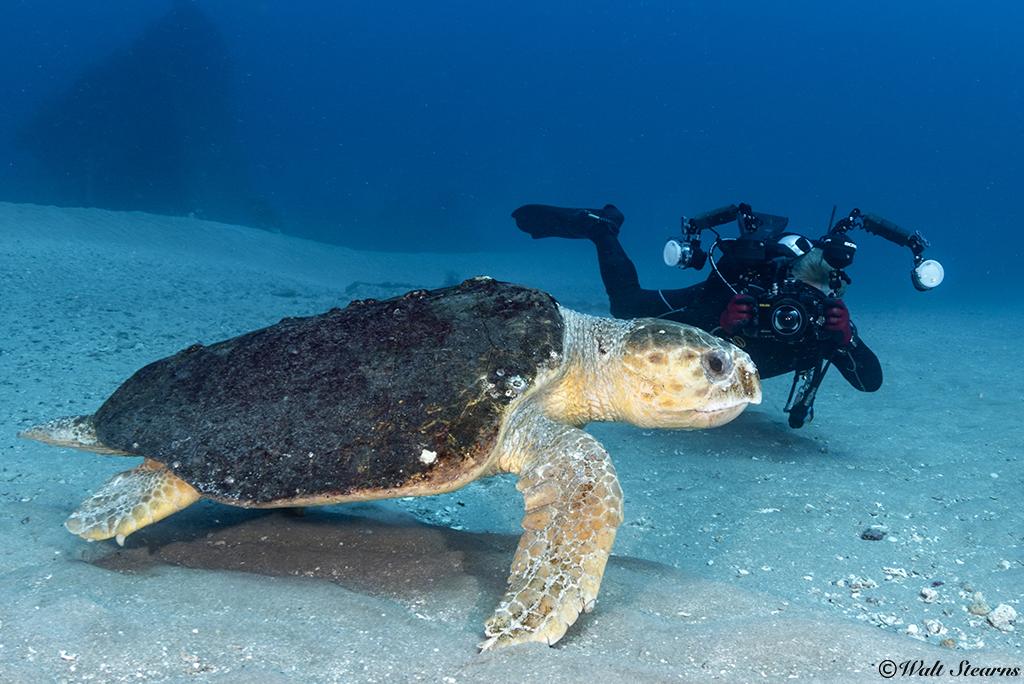
The key to approaching sea turtles is to make your movements slow and deliberate. Oftentimes turtles may be inquisitive and will come in close for a better look. Above all, don’t swim directly at them, which can make them feel threatened and cause them to instantly bolt. When a sea turtle really wants to get somewhere, they are anything but slow. Practicing a little patience will always get you better results. Above all, don’t touch or chase!
An underwater photographer captures a few shots with a cooperative adult size loggerhead sea turtle, keeping his movements slow and deliberate.
